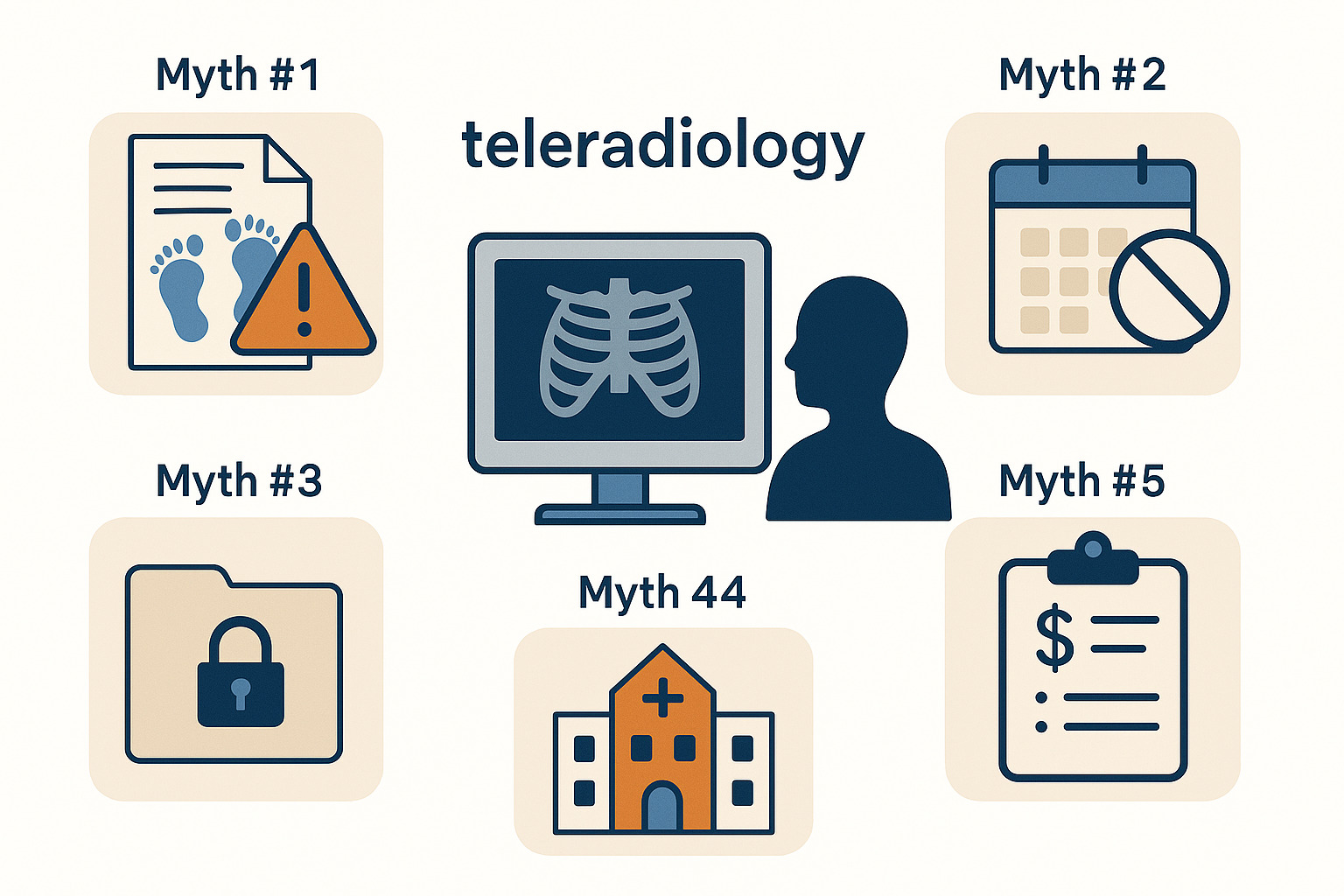The Future of Teleradiology: Predictions for the Next 5 Years
By oshininfotech

In 2025, the global teleradiology market is projected to balloon to USD 6.66 billion, up from that same estimate—already a massive sum—in 2024. It’s expected to double to USD 13.01 billion by 2030, growing at a healthy CAGR of 14.3%.
Source : mordorintelligence
That staggering number means something to us: teleradiology is not only a tool of remote convenience, but is rapidly becoming the engine of modern diagnostic imaging. Whether it‘s delivering trauma-critical CT studies in minutes, or shipping MRI, X-ray, or mammography studies half way around the world, teleradiology is changing the way access to healthcare and diagnostic imaging is delivered.
Read more: CT Scan vs MRI
AI Will Read the First Image Before a Radiologist Even Sees It
Picture this: a trauma patient arrives at a small-town ER in the middle of the night, and they undergo CT scanning. By the time the local doctor is done stabilizing the patient, the artificial intelligence software in teleradiology has already alerted a downstream neuroradiologist from 3,000 km away about a possible bleed in the brain.
A 2024 Stanford Medicine study showed that AI algorithms were successful in detecting critical findings on X-rays, 10-15 minutes faster than the traditional workflow — which can be lifesaving.
Photon-Counting CT Will Become the Standard
Traditional CT scanners are like old cameras — they work, but they miss some detail. Photon-counting CT technology, already piloted in centers like Mayo Clinic, captures images at higher resolution and lower radiation doses.
In a teleradiology setting, these sharper images mean remote specialists can detect tiny tumors or early-stage fractures that older machines might miss.
Teleradiology Will Solve the Radiologist Shortage — Globally
By 2030, the American College of Radiology warns of a shortage of 20,000 radiologists worldwide. Rural hospitals are already feeling the strain.
Through virtual radiology services, a hospital in Africa could have its mammography images read by a breast imaging specialist in London within the hour — without moving the patient.
Read more : A Comprehensive Guide to Tele Radiology
Telemedicine and Teleradiology Will Fully Merge
Today, your MRI might be scanned in one city and reported in another. In the future, the same platform will connect you to the reporting radiologist via secure video call. You’ll see your scan on-screen as the expert explains it in real-time — breaking down barriers between patient and specialist.
5G and Cloud Will End the “Too Big to Send” Problem
One challenge in teleradiology was always file size — a high-resolution CT scan can be over 1GB. With 5G in medical imaging and next-gen compression algorithms, even complex 3D MRI studies will transmit almost instantly, enabling 24/7 radiology reporting anywhere in the world.
Global Collaboration Will Be Routine
A hip fracture X-ray in Jaipur could be reviewed by an orthopedic radiologist in New York, a musculoskeletal imaging expert in Melbourne, and an AI system trained on millions of cases — all before the surgeon enters the operating room.
This isn’t science fiction — platforms like Medicai and Telerad Tech are already testing multi-specialist collaborative reporting features.
Cybersecurity Will Be as Important as Image Quality
With cross-border data sharing comes the need for HIPAA compliant teleradiology and advanced encryption. In the next five years, secure medical image sharing will be a top priority, ensuring patient trust while enabling speed.
Final Word
The future of teleradiology isn’t just about faster images — it’s about better, more human care, anywhere on Earth. From AI in radiology to photon-counting CT and telemedicine integration, the next five years will be defined by speed, accuracy, and accessibility.
And if you’re reading this from a remote town where the nearest specialist is hours away — you might soon get world-class CT scan, MRI, X-ray, or mammography reporting in minutes, not days.





